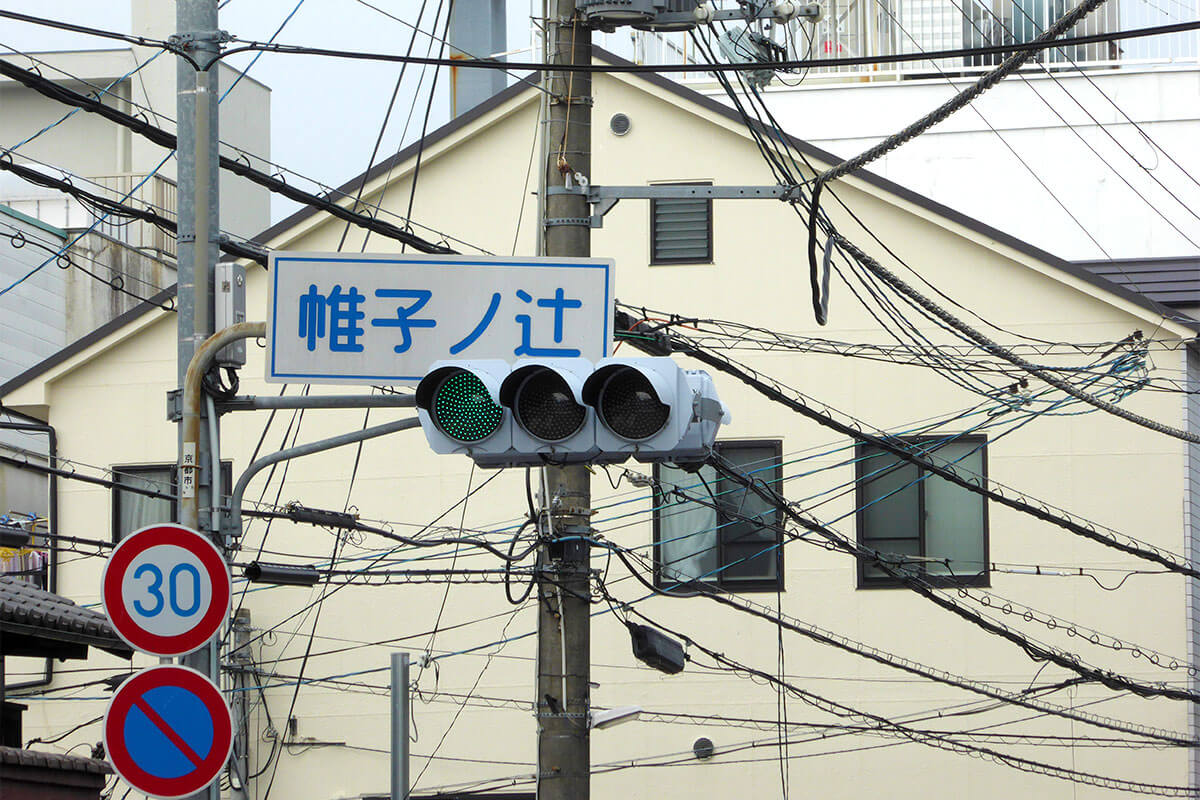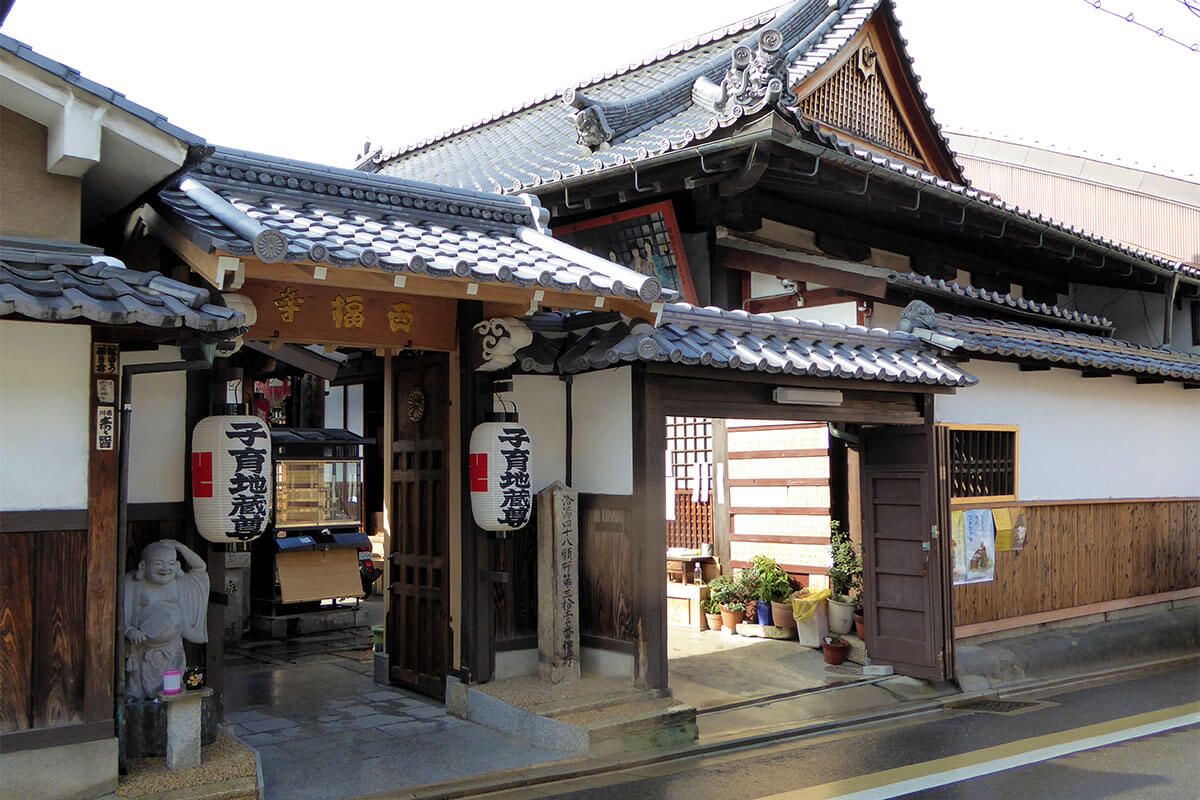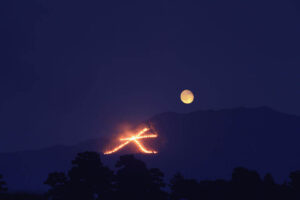
This year, too, Kyoto has been hit by an extremely hot summer. With temperatures exceeding 35 degrees Celsius every day, I picked up a story that might help cool things down a bit.
On the way of the commonly known "Randen" train that connects Kitano Shiraume-cho to Saga Arashiyama.Station named "Katabira no TsujiThe term "mail" is used to refer to a single garment, a summer kimono made of raw silk or linen. The term "kairi" refers to summer clothes made of raw silk or linen. The "kairi" is reminiscent of the "sutra mail," a death garment worn when a person dies and enters the coffin.The very name of the street of the mail derives from the sutra mail of the death costume.It seems.

Road sign at Katabashi-no-Tsuji
In the early Heian period,Empress said to be a rare beautyThere was a Empress of Emperor Saga andKachiko TachibanaShe was called the "Empress Dangrin". Later known as Empress Danglin, she was not only good-looking, but also wise and deeply devoted to Buddhism. Her beauty attracted the attention of the monks who served the Buddha, and they were not able to devote themselves to their training. The empress was concerned about this,After your death, do not bury your corpse, but throw it away on a street somewhere to feed the birds and beasts."He left a will. He also told them to make a picture of his decay and passed away.
The place where Empress Danrin's body was dumped is the Kairi no TsujiThe site is said to have been the place where the coffin of the empress was blown down by the wind. One theory is that this was the place where the coffin of the empress was covered with her mail, which was blown away by the wind and fell down.
The "Nine Phases" paintings, which are said to have depicted the Empress's body in nine separate scenes of her wind burial, remain today. The paintings depict the beautiful appearance of the Empress in life, her death, and the horrifying scenes of her body exposed in the field as it swells and decomposes, eaten by birds and animals, with only the white bones rolling away and finally returning to the earth. Though beautiful now, we all become ugly when we grow old and die. The empress,He showed the world the transience of beauty and the impermanence of the world with his own body.It was.
Its graphic painting called "Empress Danglin Nine Phases" is,Seifukuji Temple stands at the Rikudo no Tsuji in Higashiyamain the

Saifukuji Temple
The crossroads of the six roads is the gateway to the underworldAs they say, the oldEntrance to Toribeno, one of the three major funeral sites in KyotoThe Seifukuji Temple is also located in the same area. In addition, Seifukuji Temple isPrayer Hall of Empress DanrinThis is the temple that was This year, during the "Rikudo Mairi" (pilgrimage to the six directions) held from August 7 to 10, the nine-phase paintings will be open to the public and visitors can encounter them. Anyone who sees it is sure to feel something. ......
[related-article field="related1″].
By the way, it is said that the monks, who had been in love with the empress because they could not devote themselves to their training, came to know the impermanence of the world after her death and began to devote themselves to their training again. Since the empress died at the age of 65, the nine-phase painting is not an actual copy, but was drawn later in life.
Incidentally, in Sagano, Ukyo-kuDanrin templeThere is a temple calledDerived from the temple founded by Empress DanglinI was told that the temple was named after the Empress of Japan. The temple is a quiet temple with beautiful greenery in the precincts and beautiful autumn foliage in the fall.

Danrinji Temple in Sagano
Nevertheless, if she chose a wind burial in her capacity as empress and also left word to draw the body of her own volition,Her unparalleled beauty and empress status were, for her, "fleeting," in other words, nothing more than impermanence,It may be.

What is the nationally unique three-pillar torii gate?

Tanabata Festival in Kyoto, where wishes are made according to the lunar calendar

Fireworks are one of the most popular summer traditions in Japan.

At 8:00 p.m. on August 16, bonfires are lit on each of the five mountains in turn.
Tradition that exists everywhere in the city of Kyoto. It is not just a picture, it is secretly alive in this modern age and continues to coexist with people. The two of Office TO, who previously wrote a series of articles "Kyoto's Demon World Exploration" in the monthly magazine Leaf, explore the mysterious "different" world of Kyoto, which was created over 1200 years. I will unravel the story while actually visiting the place. .
 News
News Feature article
Feature article Featured event
Featured event